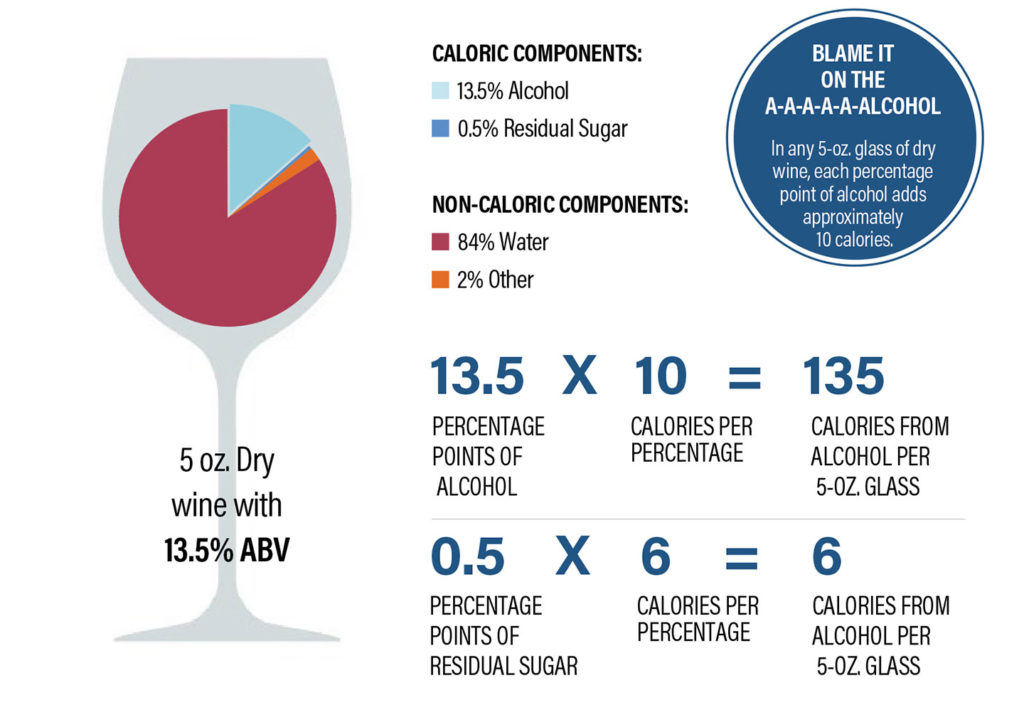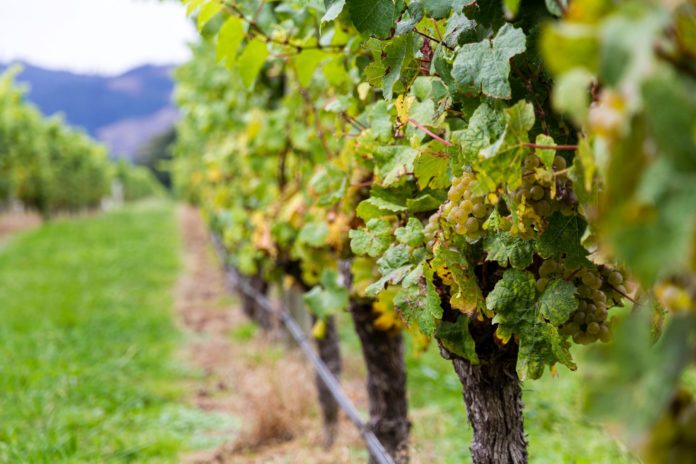Nowadays, many wine shoppers are calorie-conscious, choosing hard seltzers and other manufactured diet drinks in a bid to stay healthy. Many dry wines can offer a more-healthful, more-natural and more-flavorful alternative with a similar calorie count per serving.
However, these can be hard to identify, since most wines do not specify calories on the label, and none carry the mandated nutrition labels found on food packaging.
Luckily, if the wine is dry, it’s easy to calculate its approximate calorie count per serving. This is possible because the only significant sources of calories in wine are alcohol at 7 calories per gram, and sugar at 4 calories per gram. Since dry wines contain so much more alcohol than sugar, their alcohol calories alone can provide a reasonably accurate approximation of the total.
What About Wine Calories from Residual Sugar?
As a general rule, dry wines contain only tiny amounts of sugar — less than 10 grams per liter residual sugar if they’re still, and less than 20g/l if they’re sparkling. We can therefore be confident that any wine that in any wine that tastes dry, residual sugar would be unlikely to contribute more than 5 additional calories per 5-oz. glass or 10g/l for bubbles.

Feature photo by Kris Gerhard on Unsplash.
Marnie Old is one of the country’s leading wine educators. Formerly the director of wine studies for Manhattan’s French Culinary Institute, she is best known for her visually engaging books published by DK – such as Wine: A Tasting Course. Marnie currently serves as director of vinlightenment for Boisset Collection. Read her recent piece, How to Make Sense of Wine Language.





As for the residual sugar, I’m pretty sure 0.5 times 6 equals 3, not 6. Not much of an impact, but would still like to know which part of this equation is wrong, or if someone just muddled the answer.
I can’t follow this figuring. Makes no sense. Trying to work with 5 oz of 8% sparkling wine thats not terribly sweet. What does it mean 10 is the measure of calories per percentage? Calories if the drink? Of the alcohol only? And if so, do you add the measure for the sugar to the 135 to mean 141 calories for a glass of the wine? Why then is there no result to the Q: how many calories are there in this glass of wine?